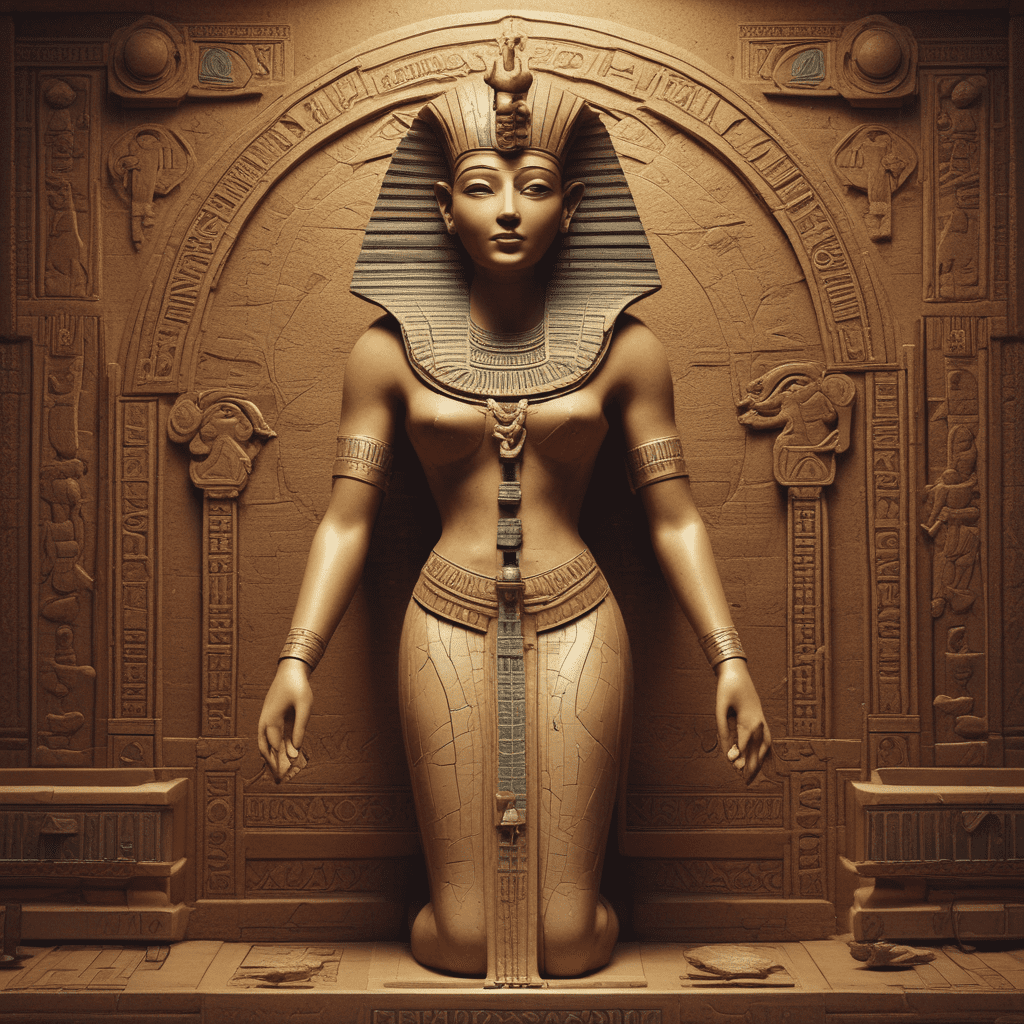The Myth of the Goddess Wadjet in Ancient Egypt
In the rich tapestry of Ancient Egyptian mythology, the goddess Wadjet holds a significant place as a potent deity associated with protection, royalty, and the fierce symbolism of the cobra. Let’s delve into the captivating mythos surrounding this revered figure.
Who Was Goddess Wadjet?
In Ancient Egyptian belief, Wadjet, also known as Buto, was a prominent protective goddess often depicted as a cobra or a woman with a cobra’s head. She was linked with the lower Nile Delta region and the city of Buto (modern-day Desouk). As a symbol of royalty and divine authority, Wadjet was closely connected with the pharaohs, embodying their power and sovereignty. Her protective nature extended to all of Egypt, safeguarding the land and its people from malevolent forces.
Role of Wadjet in Mythology
Wadjet played a crucial role in various Egyptian myths and religious beliefs. She was believed to be the daughter of the sun god Ra and often associated with the Eye of Ra, representing the power of the sun in its destructive form when unleashed against enemies. As the ‘mistress of the papyrus thicket,’ Wadjet was also revered as a guardian of the pharaonic regalia and a nurturing force symbolizing fertility and growth.
Worship and Cultural Significance
Worship of Wadjet dates back to the Predynastic Period in Egypt, and her cult remained prominent throughout ancient Egyptian history. Temples dedicated to her were built, with the most notable sanctuary located in Buto. Priests and priestesses devoted themselves to her service, performing rituals and ceremonies to honor and appease the goddess. The emblem of the cobra, often worn on the uraeus crowns of pharaohs, was a potent symbol of Wadjet’s protection.
FAQ about the Myth of the Goddess Wadjet in Ancient Egypt
Who was the Goddess Wadjet in Ancient Egyptian mythology?
Wadjet was a significant goddess in Ancient Egyptian religion, often depicted as a cobra or a woman with the head of a cobra. She was associated with protection, royalty, and the sun.
What role did Goddess Wadjet play in Ancient Egyptian beliefs?
Goddess Wadjet was believed to protect the pharaohs and the country of Egypt. She was considered a fierce protector and a symbol of divine royalty, often depicted on the crown of Upper Egypt.
What symbols were associated with the Goddess Wadjet?
Wadjet was symbolized by the cobra, the uraeus (cobra symbol on the royal crowns), and the sun disk. These symbols represented her protective and royal attributes in Ancient Egyptian mythology.
How was Goddess Wadjet connected to other deities in Egyptian mythology?
Wadjet was closely linked to the goddess Nekhbet, who represented Upper Egypt. Together, they were known as the “Two Ladies” and were associated with the unification of Upper and Lower Egypt.
What temples or sites were dedicated to the worship of Goddess Wadjet?
One of the most famous temples dedicated to Wadjet was the Temple of W
